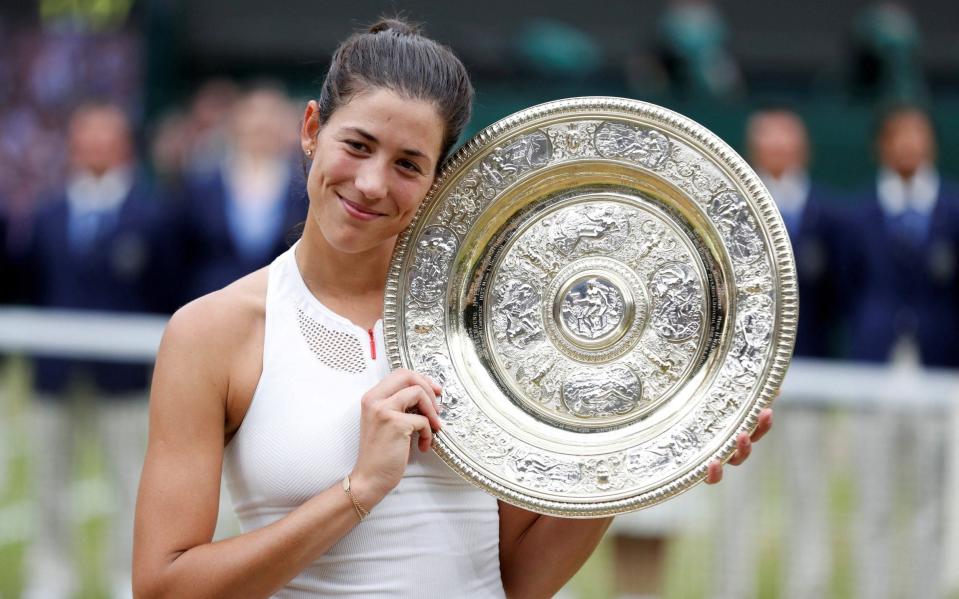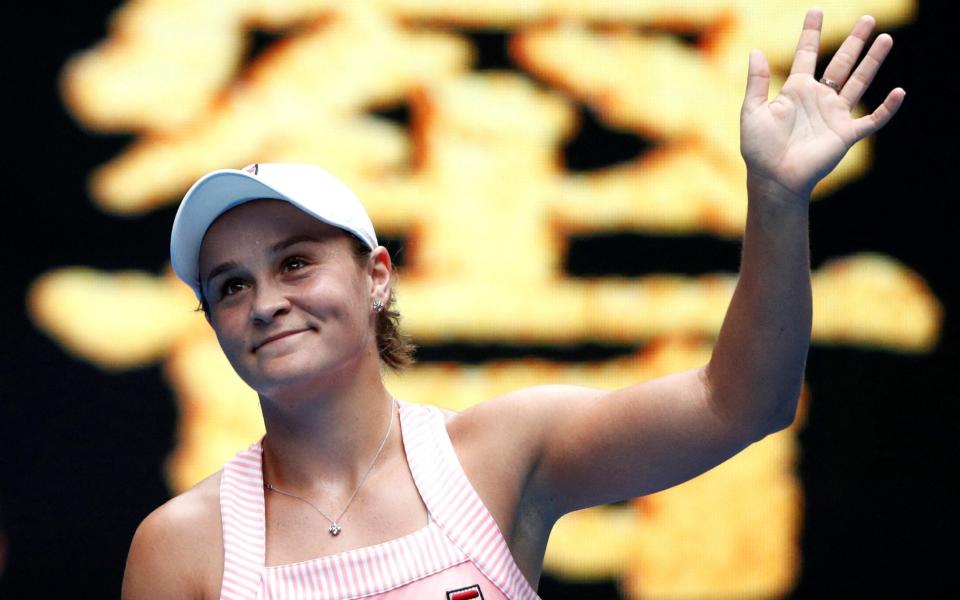Women's tennis has a problem: the biggest players aren't playing

The former Wimbledon champion Garbiñe Muguruza has become the latest high-profile woman to walk away from tennis, further depleting a tour which is already starved of star power.
In an Instagram post, Muguruza said that she was “spending time with family and friends” before adding that “I am going to lengthen this period till summer, therefore I am going to miss clay and grass season”.
While Muguruza’s post implies that she should be back for the autumn, there is no firm commitment. Like Ashleigh Barty – another Wimbledon champion who retired suddenly a year ago – she appears to have lost her enthusiasm for the tennis carousel.
At 29, Muguruza is two-and-a-half years older than Barty, and has more miles on the clock. She is closer in age to 31-year-old Simona Halep – another Wimbledon champion – who hasn’t played since testing positive for a banned substance at last year’s US Open. It’s understood that Halep is still several weeks away from being ready to bring her defence to a tribunal.
Another big name who has been absent since September is 25-year-old Naomi Osaka, a four-time major champion on hard courts. In Osaka’s case, she is taking maternity leave in preparation for the birth of her first child, and has insisted that she is keen to return to professional tennis in the future. And yet, as with Muguruza, Osaka has not always given the impression of enjoying the touring life.
With Serena Williams having retired last year, and Venus Williams a very occasional visitor, the WTA Tour is now dominated by Eastern European women. This season, the trio of Poland’s Iga Swiatek, Belarus’s Aryna Sabalenka and Kazakhstan’s Elena Rybakina have been the most effective performers, although the Czech Republic’s Petra Kvitova – yet another Wimbledon champion – beat Rybakina in Sunday’s final of the Miami Open.
Given that tennis’s commercial pull is hugely reliant on star names and reliable rivalries, you can see how the absence of so many potential draw cards is hurting the WTA’s balance sheet. In fact, the WTA board recently sold off a 20 per cent stake in the tour’s commercial operations to private equity firm CVC, in an attempt to balance the books.

With the exception of Romania’s Halep, the other women mentioned above all hail from relatively large markets: Muguruza from Spain, Barty from Australia, Osaka from Japan and the Williams sisters from the United States. It is an unfortunate reality that these nations offer more commercial opportunities than the former Eastern bloc.
In Muguruza’s case, she has suffered a prolonged form slump that dates back to her last tournament win – which came at the WTA Finals in Guadalajara 17 months ago. She delivered a career-worst season in 2022, registering only 12 wins alongside 17 defeats, and has lost all four matches that she contested this year.
As a result, Muguruza’s ranking has slumped to No 132 in the world – her lowest figure since she was a dynamic 18-year-old. This has left her unable to earn direct entry to most WTA events. But as a two-time slam champion – who won Wimbledon in 2017 and the French Open the previous year – she could surely have asked for wild cards (tennis jargon for discretional invitations) if she had wanted to play.
Muguruza and Barty have earned very similar sums in prizemoney – around £20 million and £19 million respectively – and they both cashed in at the WTA Finals, with Barty landing a world-record £3.5 million payday in Shenzhen in 2019.
Increasingly, it seems as if the ever-increasing pay-packets available on the WTA Tour – which will soon be further boosted by the involvement of CVC – are equating to shorter careers rather than longer ones.
Anecdotally, women are said to find professional tennis a lonelier lifestyle than men. This argument was first advanced in John Feinstein’s seminal book 1991 Hard Courts, in which Martina Navratilova’s coach Mike Estep said “When I played, we all tried like hell to beat one another but then went out for dinner or a beer at night. That doesn’t happen on the women’s tour. They’re all friendly to one another in the locker-room, but once they leave the locker-room, they almost always stick to themselves.”
This diagnosis has changed little over the past 30 years. Several ways of making tennis more congenial for female players have been discussed, including more women in support staffs and more team events. But the WTA tour – which echoes the ATP model that evolved piecemeal in the 1960s and 70s – shows little sign of changing.

